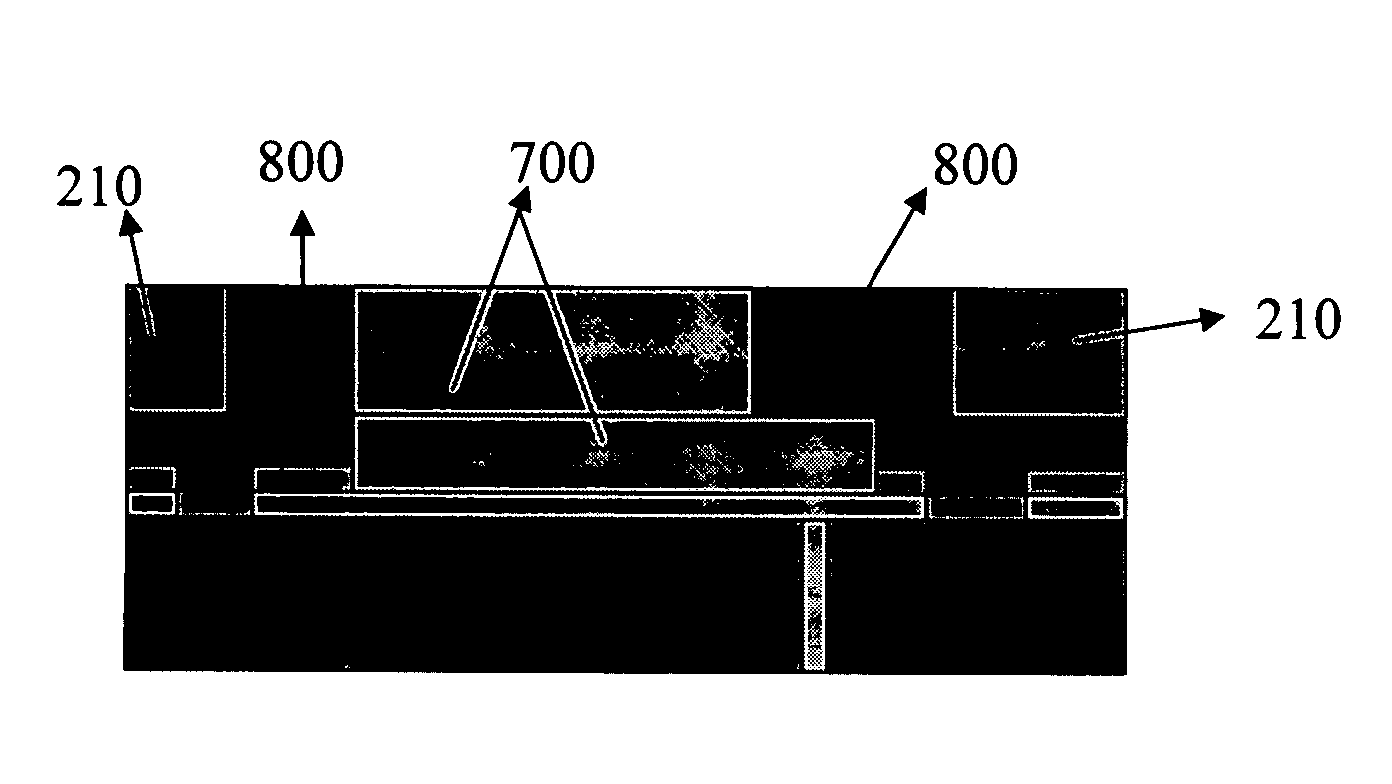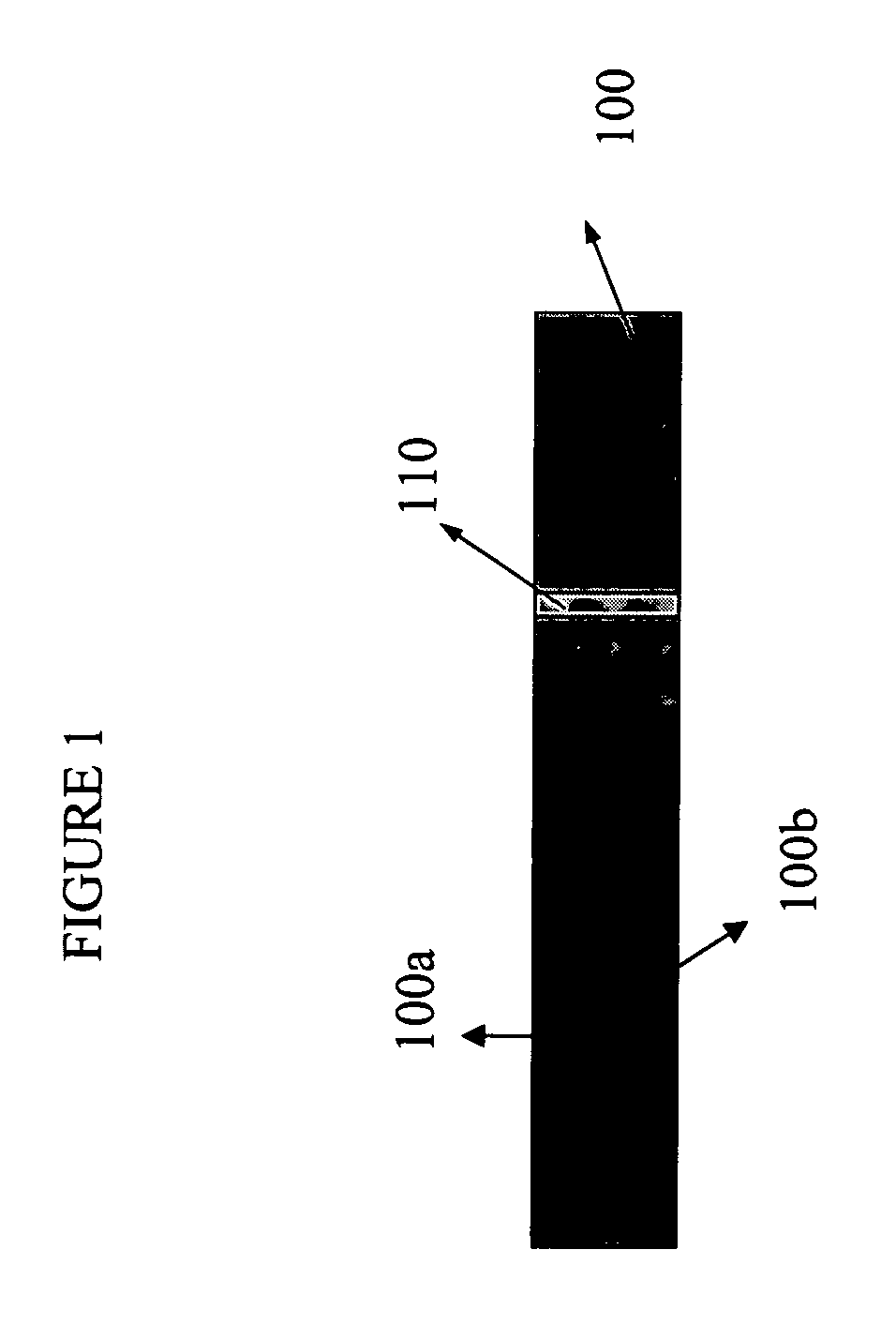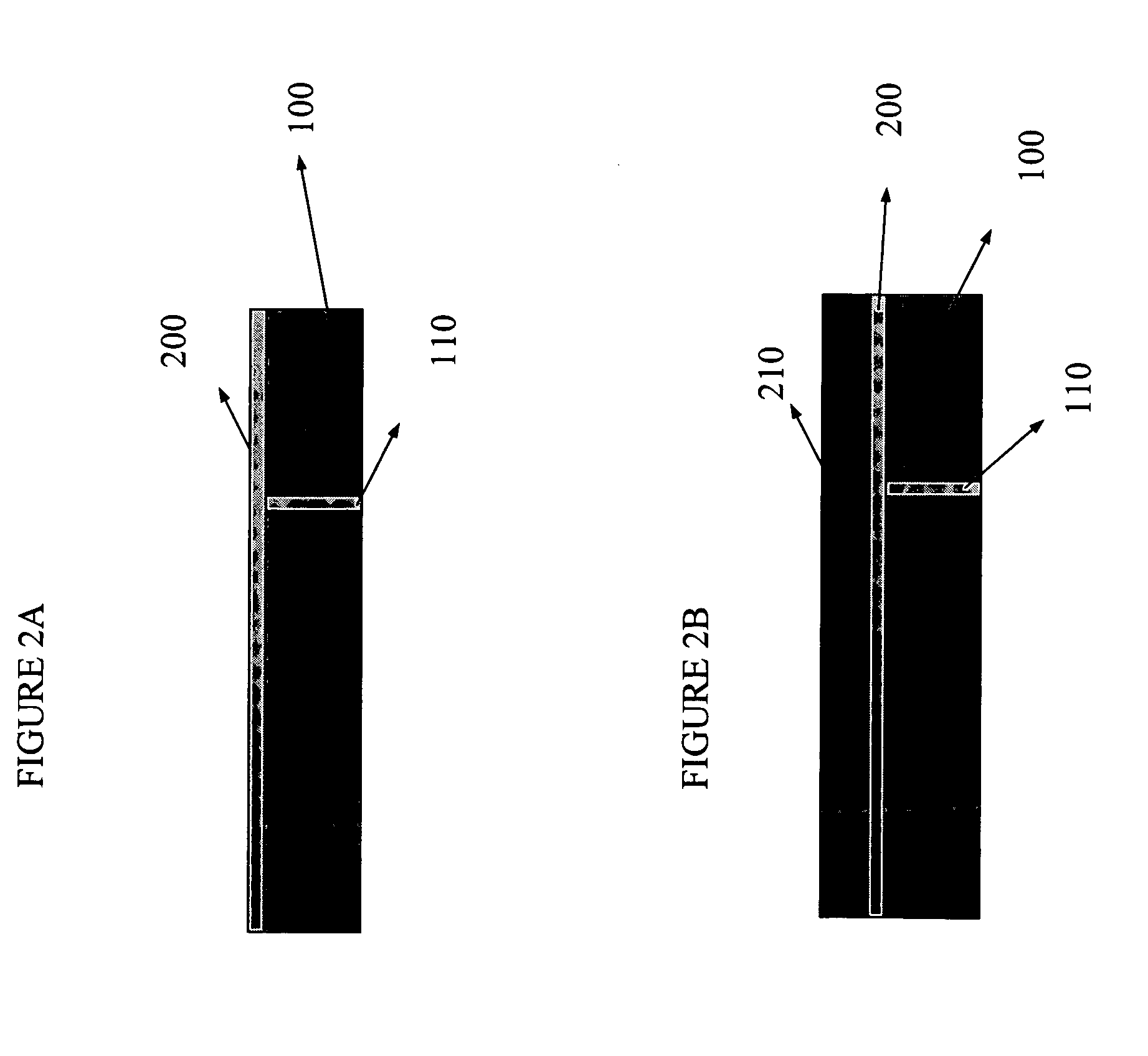Process for forming MEMS
a technology of mems and sacrificial layers, which is applied in the manufacture of microstructural devices, microstructures, electrical devices, etc., can solve the problems of not being able to achieve the effect of extending the structural stability of the structure, and not being able to generally be done through both the photoresist and the primary metal,
- Summary
- Abstract
- Description
- Claims
- Application Information
AI Technical Summary
Benefits of technology
Problems solved by technology
Method used
Image
Examples
Embodiment Construction
[0013]FIG. 1 shows a starting material on which to build the microstructure. The substrate 100 may be any type of substrate, including semiconductors such as silicon, germanium and gallium arsenide, ceramics such as alumina, aluminum, nitride low temperature cofired ceramics (LTCC) and high temperature cofired ceramics (HTCC), metals or glasses. In an embodiment of the present invention, microstructures such as springs used in testing semiconductor devices may be built on the substrate 100. In that case, the substrate 100 may be a Low Temperature Co-fired Ceramic (LTCC) substrate with built in vias 110 such that electricity may be conducted from one face 100a of the substrate 100 to the other face 100b of the substrate 100 by way of the vias 110. In an embodiment of the present invention, the vias 110 are made from gold, but any other conductor such as copper or platinum may be used. The ceramic may also contain electrical redistribution conductors, making it an electrical “space tr...
PUM
 Login to View More
Login to View More Abstract
Description
Claims
Application Information
 Login to View More
Login to View More - R&D
- Intellectual Property
- Life Sciences
- Materials
- Tech Scout
- Unparalleled Data Quality
- Higher Quality Content
- 60% Fewer Hallucinations
Browse by: Latest US Patents, China's latest patents, Technical Efficacy Thesaurus, Application Domain, Technology Topic, Popular Technical Reports.
© 2025 PatSnap. All rights reserved.Legal|Privacy policy|Modern Slavery Act Transparency Statement|Sitemap|About US| Contact US: help@patsnap.com



